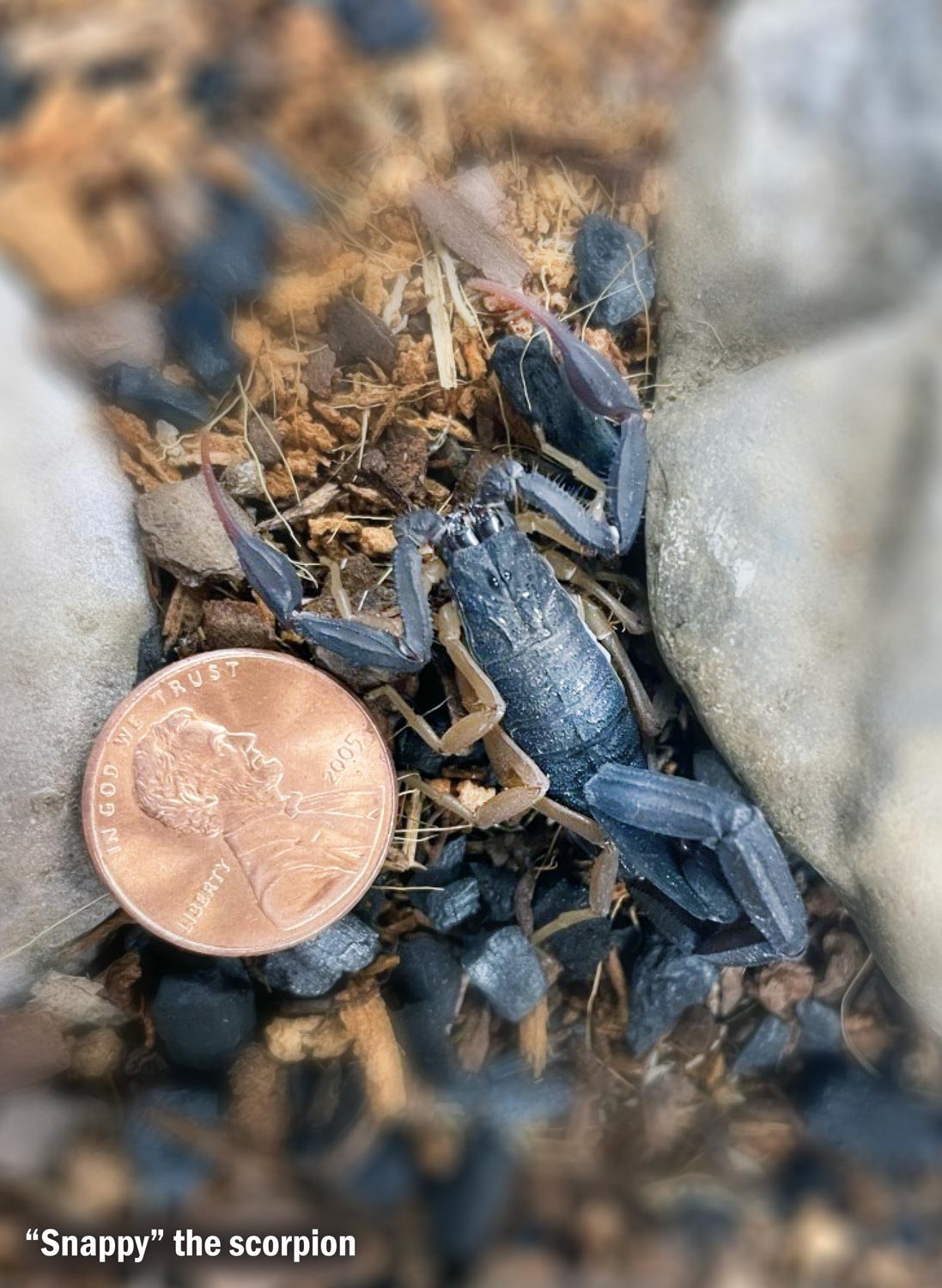Norwich food service members save globe-trotting scorpion for student study
corpions weren’t on the lunch menu at Gibson Elementary School, but that didn’t stop one from showing up in a box of bananas.
Early one Friday morning, food service staff were washing bananas when they found a scorpion in the produce box.
While scorpions may be commonplace in Guatemala, where the bananas originated, they are seldom spotted in New York, and the cafeteria staff was understandably surprised.
“Never in my 15 years have I seen such a thing and suspect that I never will again,” said Kathy Collier, a member of the Norwich Educational Support Staff Association. She said the discovery was so surprising that, initially, her team had trouble identifying it. The team posited that the animal was a hermit crab or beetle, before finally settling on scorpion.

PROVIDED
Fortunately, this type of scorpion is only mildly toxic. The sting from its long, curved tail delivers a jab similar to a bee or wasp and requires no medical treatment — unlike species native to other parts of the world, which can deliver enough venom to kill an individual.
The staff worked quickly and safely to contain the scorpion. “Then, instead of destroying it, they had the ingenious idea of passing it along to our science department, who they knew could learn from it,” said Deborah Cruger, president of the Norwich ESSA. “We are so lucky to have these individuals on our team.”
The SRPs brought the scorpion over to the Norwich High School zoology department for student study. Erik Korver, science teacher and member of the Norwich Educators Organization said he was thrilled to add the arthropod to the science department’s menagerie which includes cane toads, a turtle, and, sometimes, baby chickens.
“How often do you find a scorpion in upstate New York? We thought it would be a great learning experience for our students,” Korver said.
The animal opens the door for a lot of lessons, agreed science teacher Eric Matthews. “Students can learn about the taxonomy, ecology, and the idea of introduced species. They can learn about predator-prey relationships and develop a general appreciation for all types of animals,” Matthews added.
Korver said the students created a habitat for the scorpion in Matthews’ classroom and fed it crickets. They also viewed the scorpion under an ultraviolet light to observe it glow, or “fluoresce.”
The scorpion, whom the SRP team nicknamed ‘Snappy,’ seems to have settled in, and the students remain intrigued by it.
Scorpions exist on every continent except Antarctica; now they have added Norwich to their geography.